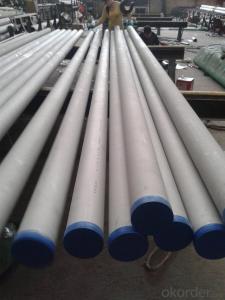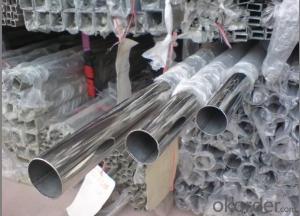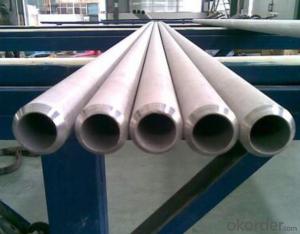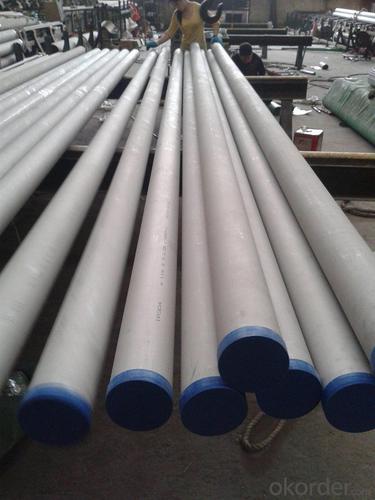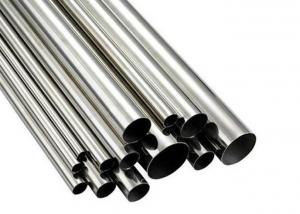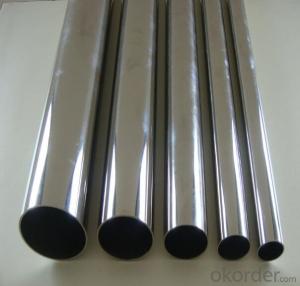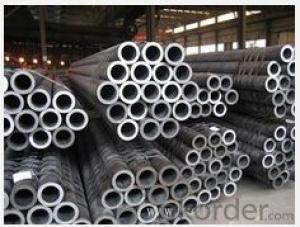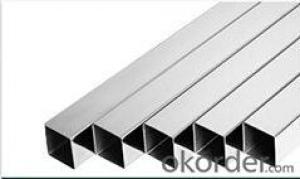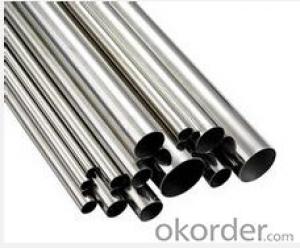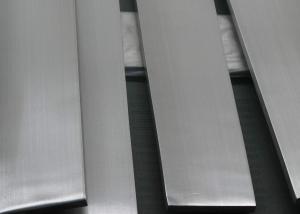Stainless steel tube; round/square
- Loading Port:
- Shanghai
- Payment Terms:
- TT OR LC
- Min Order Qty:
- 25 m.t.
- Supply Capability:
- 2000 m.t./month
OKorder Service Pledge
OKorder Financial Service
You Might Also Like
Specifications
tp321 stainless steel tube
1.WT:0.08-12.8mm
2.OD:0.25-50.8mm
3.Sample cost free for VIP customers
4.MOQ:25kgs
321 stainless steel tube
1. WT: 0.08-12.8mm
2. OD: 0.25-50.8mm
3. MOQ: 25 kgs
4. Sample cost free for VIP customer
Steel grade : 301(1Cr17Ni17),304 Moderate Frequency (0Cr18Ni9),304 AOD (0Cr18Ni9),304L(00Cr19Ni10) ,321 M oderate Frequ ency (1Cr18Ni9Ti),321 AOD (1Cr18Ni9Ti),316(0Cr17Ni12Mo2),316L(00Cr17Ni14Mo2),310S(0Cr25Ni20) ,317L(00Cr19Ni13Mo3)
Specification : GB/T14975-2002,GB/T14976-2002,GB13296-91,GB9948-88 ASTM/ASME A213/SA213,ASTM/ASME A312/SA312,ASTM/ASME A269/SA269,DIN 17458-85,DIN 17456-85,JIS G 3459,JIS G 3463,JIS G 3448 JIS G 3446.
Product Information of stainless steel:
- Width: customized
- Surface: 2B/BA/6K/8K/NO.4/HL.
- Thickness: 0.3mm - 3.0mm.
- Delivery time: 15-25 days.
- Length : As customer's requirement.
- Package: With export standard packing or customize packing.
- Payment Terms: T/T (30% deposit pay in advance and the balance before shipment) , irrevocable L/C.
Company advantage:
-Top Equipments, Leading In The Industry.
- Professional Team, Leading Innovation.
- Huge Supply Capacity Advantage, Timely and Effective Delivery.
- Modern Logistic, Fact and Convenient.
- Precise Manufacturing, Exquisite Products.
- Serve People, Create Value.
- Dimensional Network, Powerful Expansion.
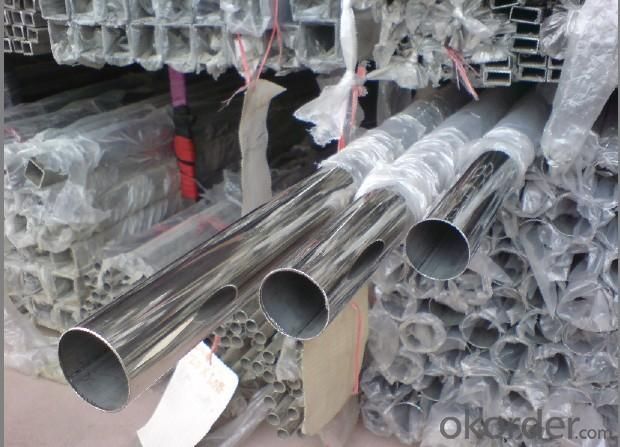
- Q: Classification, advantages and disadvantages of stainless steel welding
- The utility model has the advantages of universal use and easy operation, and is mainly regulated by people, and the welding seam material is an electric welding strip. Manual welding can weld almost all of the material, even outdoors, so it has good adaptability and is usually powered by direct current.Welding, either titanium type electrode, can also be sealed. The titanium electrode is easy to weld, the welding seam is beautiful, and the welding slag is easy to remove. But the drawback is that if you do not use it for a long time, you must bake it again to prevent moisture accumulation.
- Q: Can stainless steel pipes be recycled?
- Indeed, the recycling of stainless steel pipes is possible. This is because stainless steel, being a remarkably durable and corrosion-resistant material, possesses high recyclability. Once stainless steel pipes have served their purpose or become obsolete, they can be gathered, processed, and melted to produce fresh stainless steel items. By recycling stainless steel pipes, not only do we contribute to conserving natural resources, but we also diminish energy consumption and emissions linked to mining and the production of new materials.
- Q: Are stainless steel pipes suitable for fire protection systems?
- Yes, stainless steel pipes are suitable for fire protection systems. Stainless steel has excellent fire resistance properties, including high melting point and resistance to corrosion and oxidation. These pipes are highly durable and can withstand extreme temperatures and pressure, making them ideal for fire protection systems that require reliable and long-lasting performance. Additionally, stainless steel pipes have low thermal conductivity, which helps to minimize heat loss during a fire event.
- Q: What is the difference between seamless and high-frequency welded stainless steel pipes?
- The main difference between seamless and high-frequency welded stainless steel pipes lies in their manufacturing process. Seamless pipes are made by piercing a solid cylindrical billet of stainless steel and then rolling it into a pipe shape. This process ensures a smooth and continuous surface, resulting in a pipe with no welded seams. On the other hand, high-frequency welded pipes are created by using a high-frequency electrical current to melt the edges of stainless steel strips and then welding them together. The welded seams in high-frequency welded pipes may be visible and can affect the overall smoothness of the pipe's surface.
- Q: Are stainless steel pipes suitable for semiconductor industries?
- Stainless steel pipes are ideal for use in semiconductor industries. They possess excellent qualities that make them widely used in various sectors, including semiconductor manufacturing. The primary reason why stainless steel pipes are suitable for the semiconductor industry is their remarkable resistance to corrosion. Given that the semiconductor manufacturing process involves the usage of corrosive chemicals and gases, stainless steel pipes can endure the harsh conditions and remain intact for extended periods. Moreover, stainless steel pipes exhibit exceptional mechanical properties, such as high strength and durability. These attributes are crucial in semiconductor industries where the pipes must withstand both high pressure and temperature conditions. Stainless steel pipes can endure these demanding circumstances without warping or breaking, ensuring the safety and efficiency of the semiconductor manufacturing process. Additionally, stainless steel pipes possess excellent cleanliness and hygienic properties, making them highly favored in semiconductor industries. Maintaining cleanliness is of utmost importance in these sectors to prevent contamination. Stainless steel pipes have a smooth surface that prevents the accumulation of particles, making them easy to clean and sterilize. Lastly, stainless steel pipes possess excellent thermal conductivity, which is vital in semiconductor industries that require precise temperature control. These pipes efficiently transfer heat, ensuring stable and accurate temperature regulation during various manufacturing processes. To summarize, stainless steel pipes are highly suitable for semiconductor industries due to their resistance to corrosion, mechanical properties, cleanliness, and thermal conductivity. They offer dependable and efficient performance, making them the preferred choice for the demanding requirements of semiconductor manufacturing.
- Q: What are the different types of stainless steel pipe insulation?
- On the market, you can find various stainless steel pipe insulation options. These options differ in terms of their material composition, construction, and insulation properties. One popular option is fiberglass insulation, which involves wrapping a layer of fiberglass material around the stainless steel pipe. This type of insulation is known for its exceptional thermal insulation properties and its ability to withstand high temperatures. It is also resistant to moisture, making it suitable for both indoor and outdoor use. Another option is foam insulation, which is made from a foamed plastic material like polyurethane or polystyrene. Foam insulation is lightweight, easy to install, and provides good thermal and acoustic insulation. It is commonly used in residential and commercial buildings to insulate hot water pipes and HVAC systems. Additionally, there are elastomeric insulation materials, which are flexible rubber-like materials that can be easily wrapped around the stainless steel pipe. These materials are recognized for their excellent thermal insulation properties and their ability to resist moisture and condensation. Elastomeric insulation is frequently used in refrigeration and air conditioning systems. Lastly, there are pre-insulated stainless steel pipe systems, which come with a layer of insulation material already applied to the stainless steel pipe. This type of insulation is commonly used in industrial applications where thermal insulation is critical, such as in chemical plants or oil refineries. To sum up, the available options for stainless steel pipe insulation include fiberglass insulation, foam insulation, elastomeric insulation, and pre-insulated pipe systems. The choice of insulation type depends on factors such as the specific application, desired insulation properties, and budget.
- Q: Are stainless steel pipes resistant to chlorine corrosion?
- Yes, stainless steel pipes are highly resistant to chlorine corrosion.
- Q: Can stainless steel pipes be insulated with polyethylene-terephthalate glycol?
- No, stainless steel pipes cannot be insulated with polyethylene-terephthalate glycol.
- Q: Are stainless steel pipes suitable for high-temperature applications?
- Indeed, high-temperature applications are well-suited for stainless steel pipes. Renowned for its remarkable resistance to corrosion, impressive strength, and ability to withstand heat, stainless steel is highly regarded. Its structural integrity and performance remain intact even under extreme temperatures. Stainless steel pipes find utility in numerous industries like power generation, petrochemical, oil and gas, and food processing, where elevated temperatures are prevalent. Moreover, the durability and extensive lifespan of stainless steel pipes make them a dependable option for high-temperature applications.
- Q: Can stainless steel pipes be used for power generation applications?
- Power generation applications often utilize stainless steel pipes for a variety of reasons. Firstly, the corrosion resistance of stainless steel makes it an ideal choice for withstanding the harsh conditions of power generation processes, including high temperatures and chemical exposure. This durability translates to reduced maintenance and replacement costs over time. Additionally, stainless steel pipes boast exceptional strength and can endure the extreme pressures and temperatures associated with power generation without any deformities or fractures. This reliability is crucial for ensuring the safety and efficiency of power generation systems. Furthermore, stainless steel pipes are highly resistant to scaling and fouling, which commonly occurs in power generation applications due to impurities in the water or steam. The smooth surface of stainless steel pipes minimizes the accumulation of deposits, facilitating efficient heat transfer and preventing any blockages or obstructions. Lastly, stainless steel pipes are compatible with a wide array of power generation fuels, ranging from coal and natural gas to oil and renewable energy sources. They withstand the corrosive effects of these fuels while maintaining their structural integrity. In conclusion, stainless steel pipes are an excellent choice for power generation applications due to their corrosion resistance, durability, strength, and compatibility with various fuels. They provide a reliable and long-lasting solution for the transportation of fluids and gases in power generation systems.
Send your message to us
Stainless steel tube; round/square
- Loading Port:
- Shanghai
- Payment Terms:
- TT OR LC
- Min Order Qty:
- 25 m.t.
- Supply Capability:
- 2000 m.t./month
OKorder Service Pledge
OKorder Financial Service
Similar products
Hot products
Hot Searches
Related keywords
